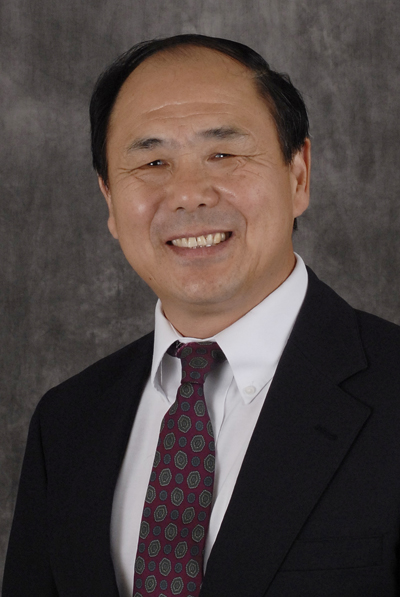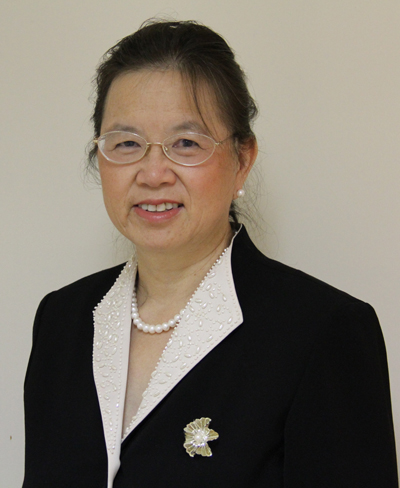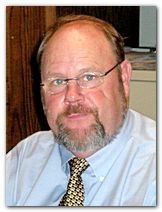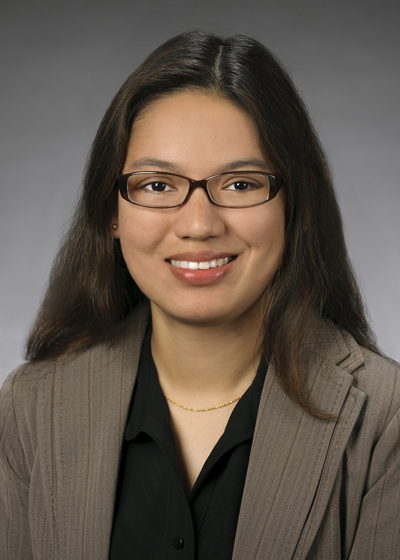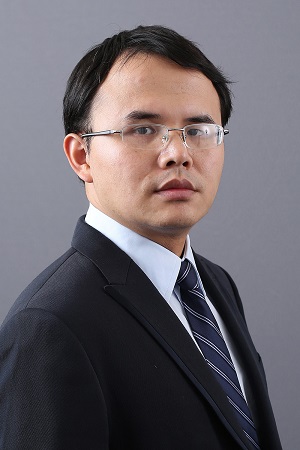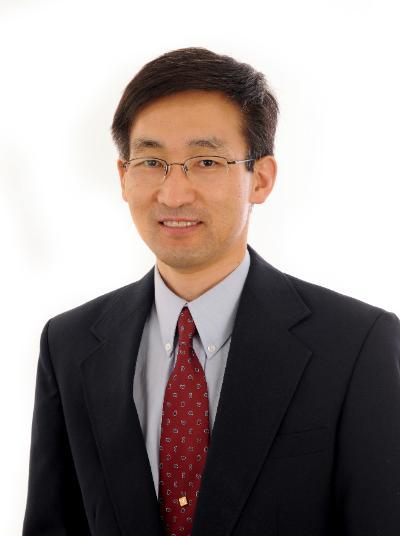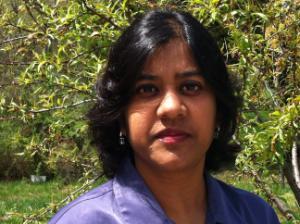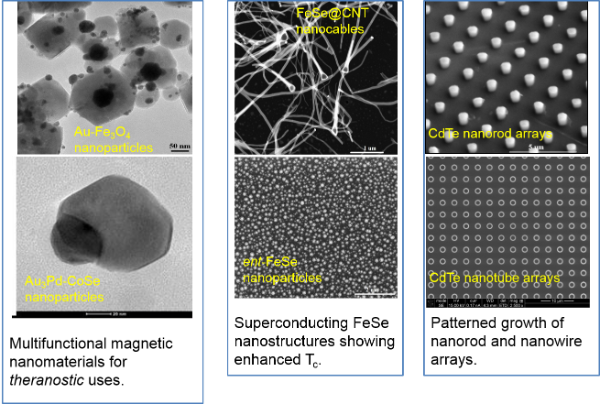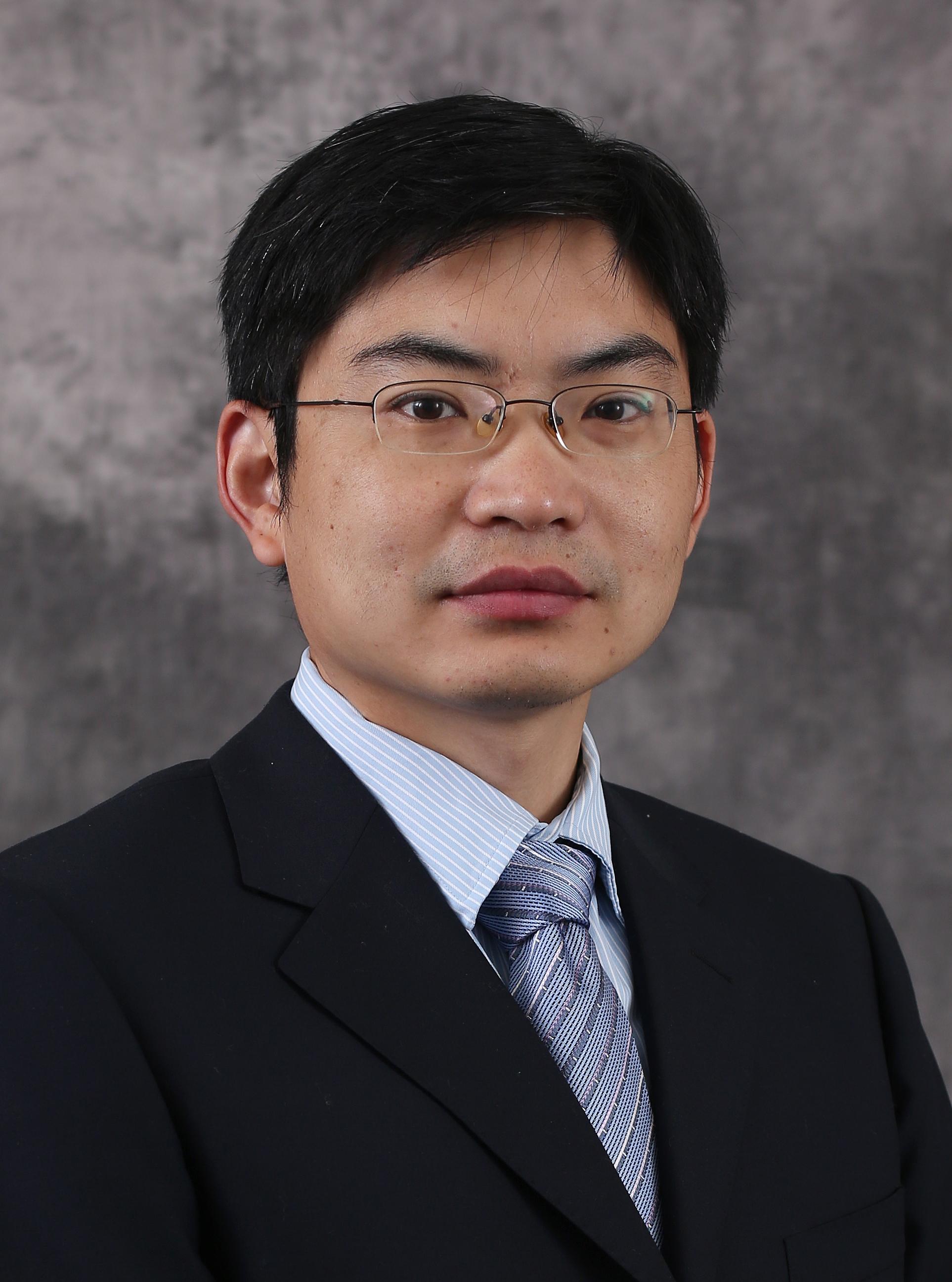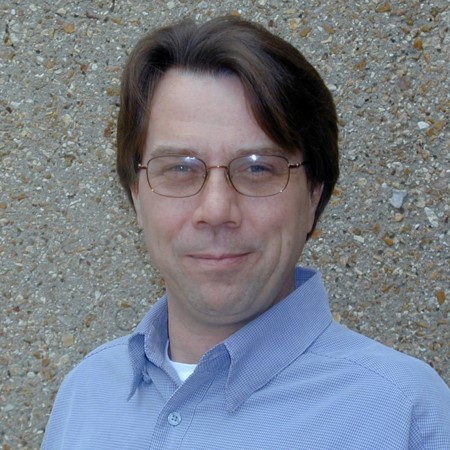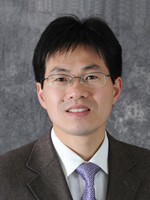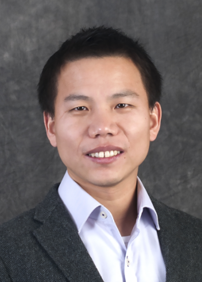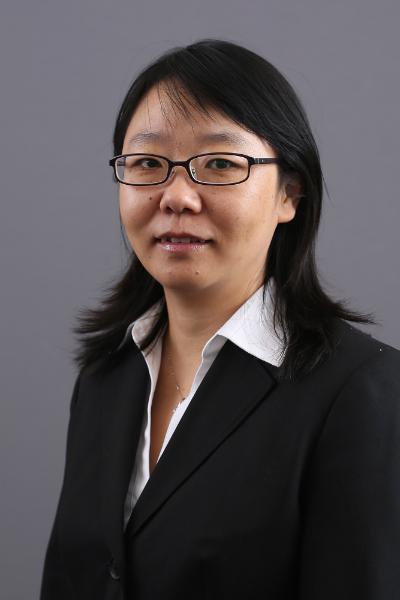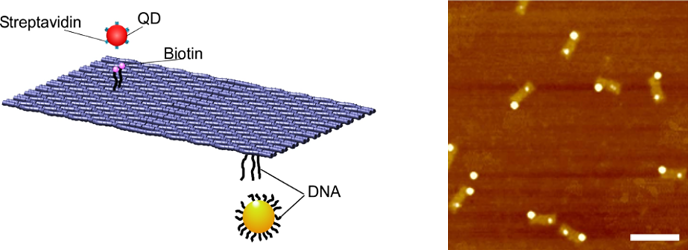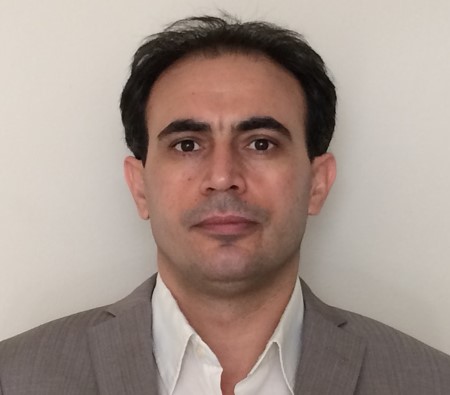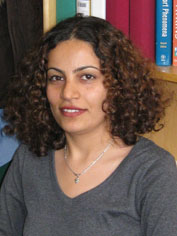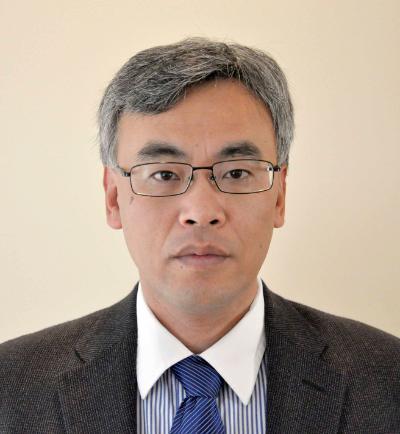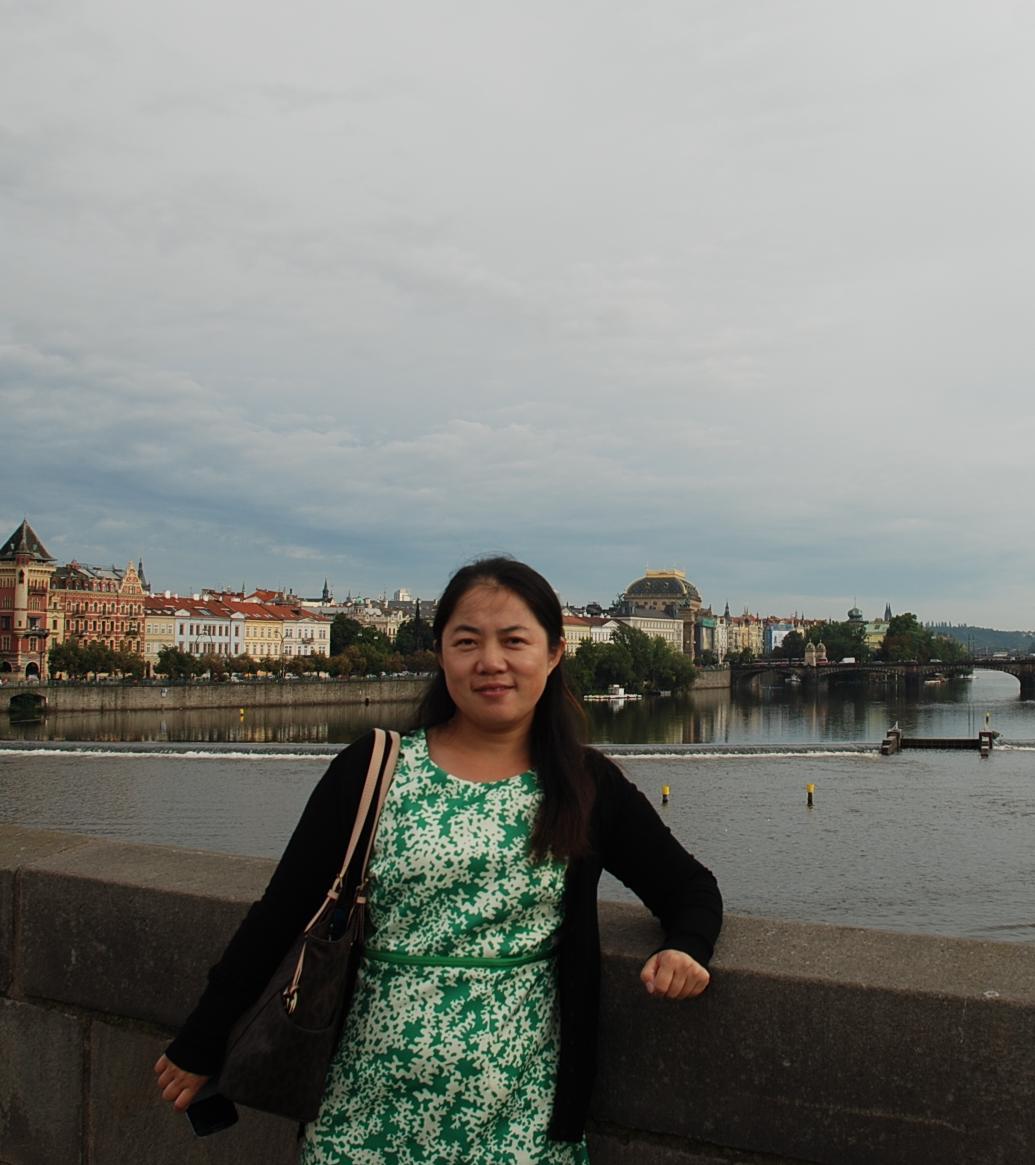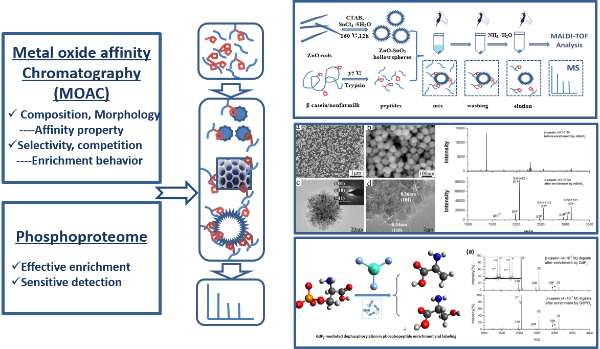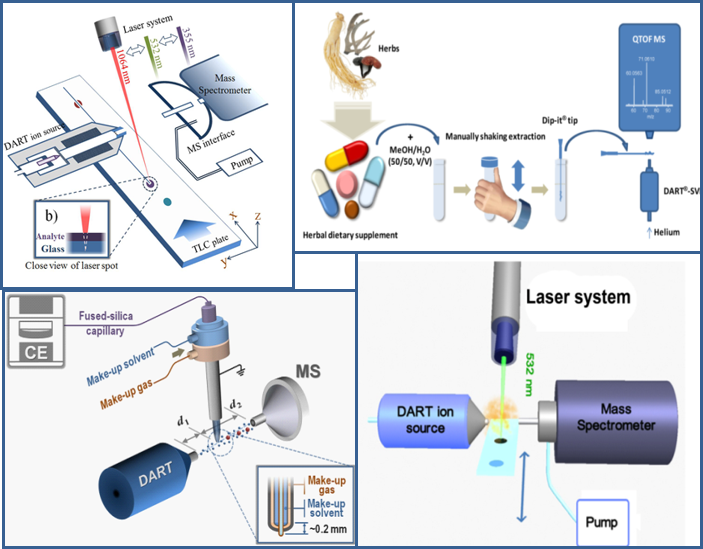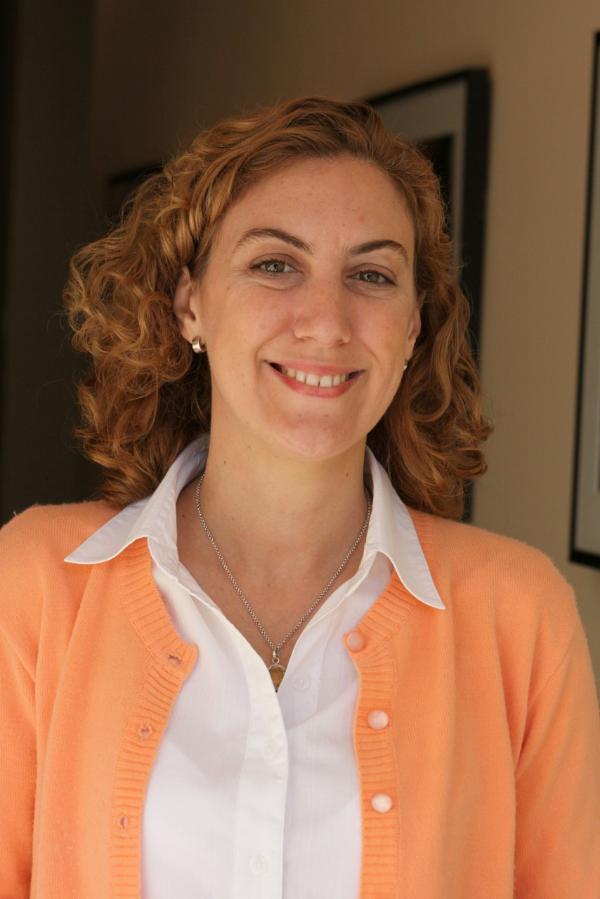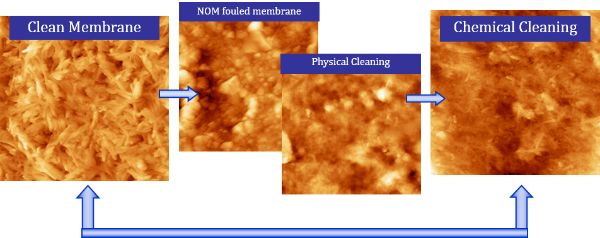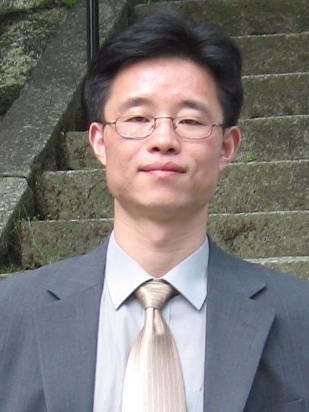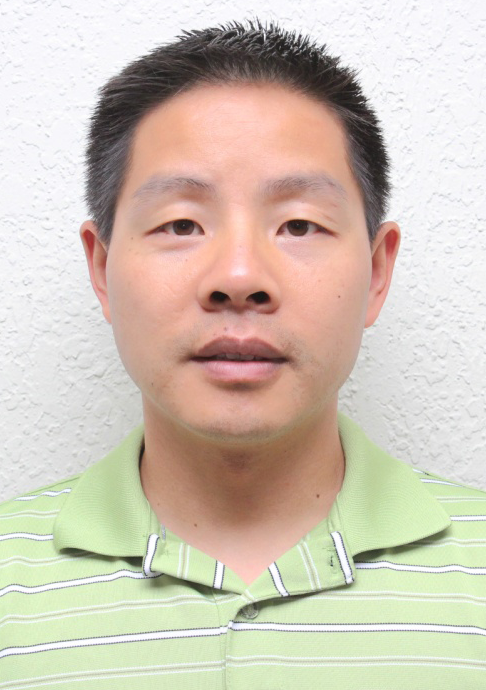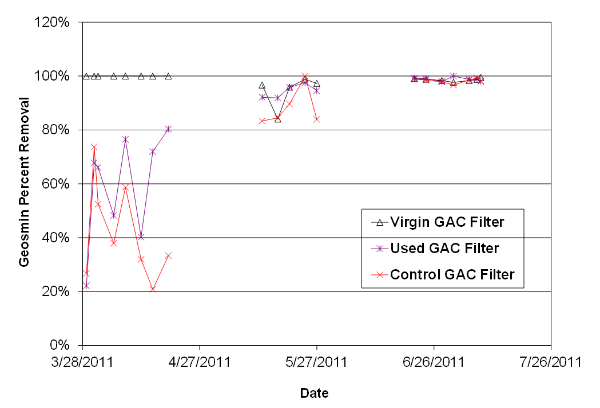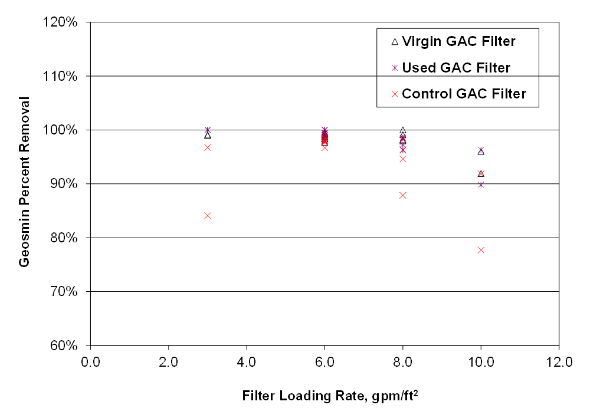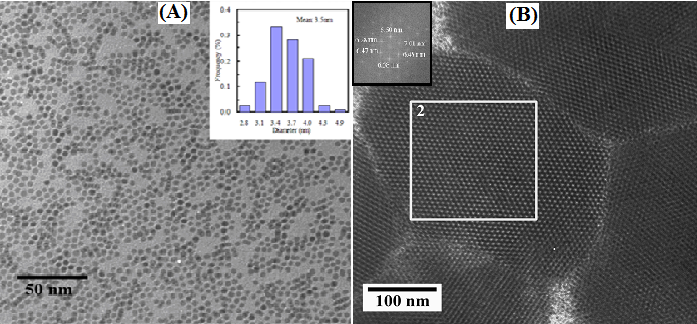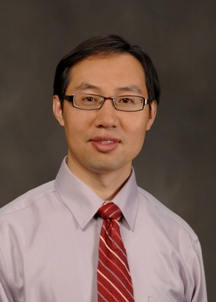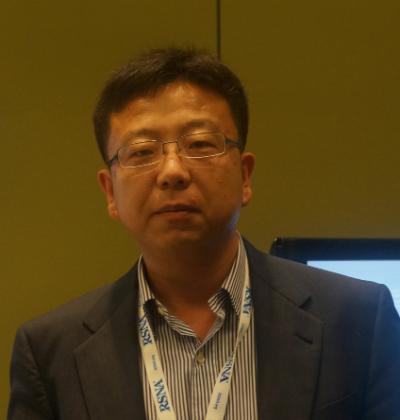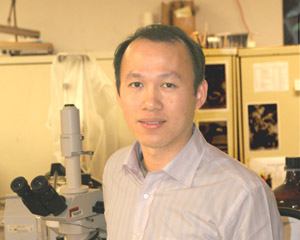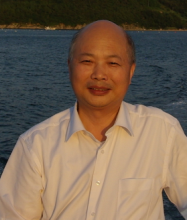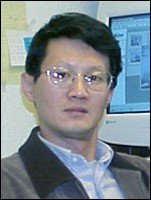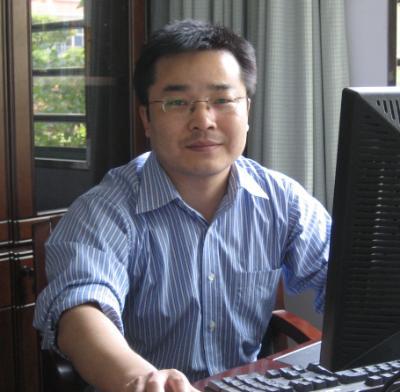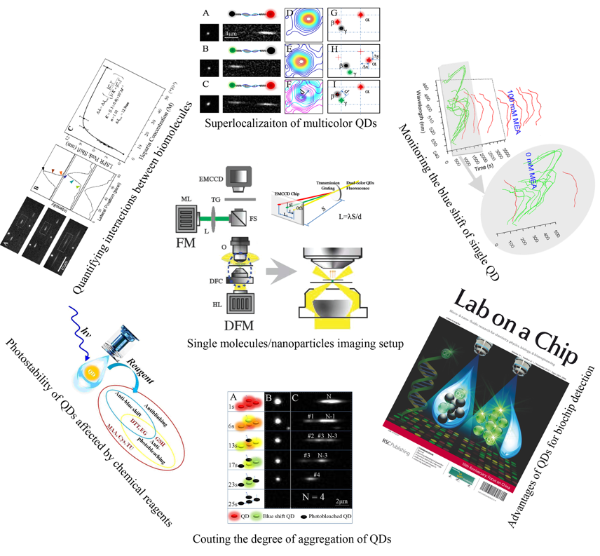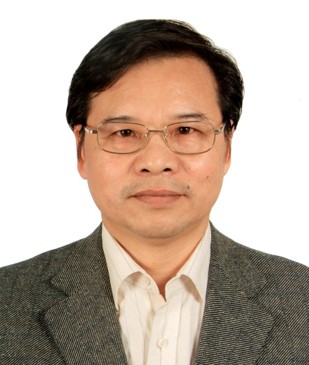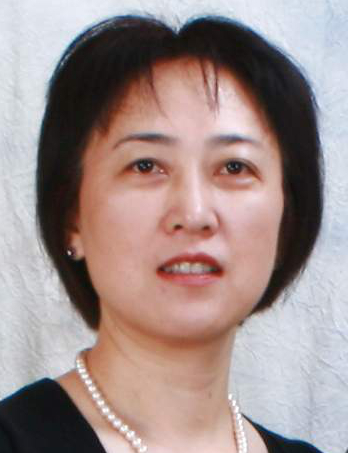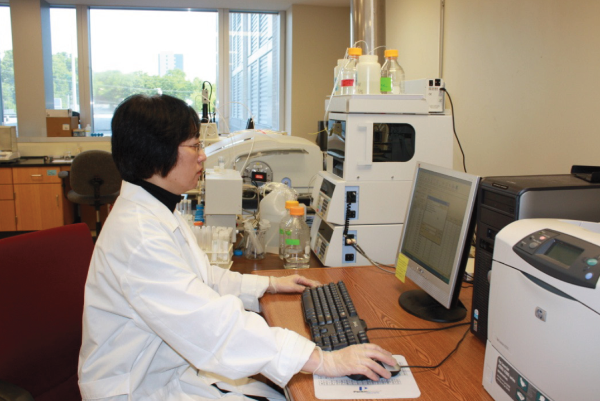Yinfa Ma, Ph.D.
Curators' Teaching Professor
Department of Chemistry
- yinfa@mst.edu
- Phone: (573) 341-6220
- 320 Schrenk Hall, 400 W. 11th St., Rolla, MO 65409
Research Interests:
(1) Bioanalytical research (2) Urinary biomarkers for early cancer detection (3) Environmental analysts for emerging environmental contamination (4) Cytotoxicity of nanomaterials (5) Single cell and single molecule detection
Personal Website:
Education:
- Ph.D. in Analytical Chemistry, Iowa State University, 1990
- Minor Ph.D. in Biochemistry, Iowa State University, 1990
Lab Director
Honglan Shi, Ph.D.
Associate Research Professor
Department of Chemistry
- honglan@mst.edu
- Phone: (573) 341-4433
- 230 Schrenk Hall, 400 W. 11th St., Rolla, MO
Research Interests:
(1) Method development for rapid characterization and quantification of engineered nanomaterials ¿ Novel single nanoparticle (SP) ¿ ICP-MS methods development and screening study in environmental samples, food, and biological samples. (2) State-of-the-art instrument development and manufacturing - Development of novel multi-functional single cell analyzer and high throughput and multifunctional single nanoparticle analysis system and other instruments. (3) Trace emerging pollutants analysis and control in natural and drinking water - water disinfection by-products (DBPs), pharmaceuticals and personal care products (PPCPs), algal toxins, pesticides, perchlorate, Cr(VI), and more. (4) Life science related research ¿ small molecule cancer markers and other markers investigation by advanced analytical technologies, bioactive material-biofluid-bioorganism interaction study by advance analytical technologies.
Personal Website:
Education:
- B.S. in Chemistry, Zhengzhou University, 1981.
- MS in Biochemistry, Iowa State University, 1990.
- Ph.D. in Analytical Chemistry, Missouri University of Science and Technology, 2010.
Philip Whitefield, Ph.D.
Professor and Chair of the Department of Chemistry
Director, Center of Excellence for Aerospace Particulate Emissions Reduction Research
Senior Investigator, Cloud and Aerosol Science Laboratory
Department of Chemistry
- pwhite@mst.edu
- Phone: (573) 341-6033
- G29 Schrenk Hall, 400 W. 11th St., Rolla, MO 65409
Research Interests:
(1) Aerosol characterization (2) Atmospheric chemistry (3) Environmental chemistry (4) Aerospace emissions
Personal Website:
Education:
- B.S. Chemistry, University of London - Queen Mary College
- Ph.D. Physical Chemistry, University of London - Queen Mary College, 1979
V.A. Samaranayake, Ph.D.
Curators' Teaching Professor
Department of Mathematics & Statistics
- vsam@mst.edu
- Phone: (573) 341-4658
- N/A
Research Interests:
(1) Time Series Analysis (2) Statistical modeling of Biological Phenomenon (3) Reliability and Survival Models (4) Design of Experiments (5) Statistical applications in econometrics, environmental sciences, and engineering
Personal Website:
Sutapa Barua, Ph.D.
Assistant Professor
Department of Chemical and Biochemical Engineering
- baruas@mst.edu
- Phone: (573) 341-7551
- 210G Bertelsmeyer Hall, 1101 N. State St., Rolla, MO 65409
Research Interests:
(1) Drug delivery for tumor treatment(2) Early cancer detection(3) Tissue regeneration
Personal Website:
Education:
- B.Sc., Bangladesh University of Engineering and Technology, 2003.
- M.S., Montana State University, 2007.
- Ph.D., Arizona State University, 2011.
Xian Huang, Ph.D.
Assistant Professor
Department of Mechanical and Aerospace Engineering
- huangxian@mst.edu
- Phone: (573) 341-7725
- 101 Toomey Hall, Rolla, MO 65409
Research Interests:
Bioinspired and biointegrated devices and materials for healthcare. •Flexible and stretchable epidermal sensors. •Transient electronics. •Implantable multichannel affinity sensing devices. •Biochips for body fluid analysis.
Personal Website:
Education:
- B.S., Measurement and Control Technology and Instrument, Tianjin University, 2004.
- ME, Measurement Technology and Instrumentation, Tianjin University, 2007.
- Ph.D., Mechanical Engineering, Columbia University, 2011.
Baojun Bai, Ph.D.
Associate Professor
Department of Geosciences and Geological and Petroleum Engineering
- baib@mst.edu
- Phone: (573) 341-4016
- 303 McNutt Hall
Research Interests:
(1) Waste Water Production Control and Treatment for Oil & Gas Industry to Protect the Environments (2) Chemical Enhanced Oil Recovery Methods (EOR) to Improve Oil Recovery (3) Unconventional Oil & Gas Development (4) Characterizations of Fluid flow in the Porous Media
Personal Website:
Education:
- B. Sc., Reservoir Engineering, Daqing Petroleum Institute, Heilongjiang, China, 1992
- M. Sc., Petroleum Engineering, Graduate School of Research Institute of Petroleum Exploration and Development (RIPED), Beijing, China 1995
- Ph.D., Petroleum Geology, China University of Geoscience, Beijing, China, 2002
- Ph.D., Petroleum Engineering, New Mexico Institute of Mining and Technology, Socorro, NM, USA, 2005
- Postdoc Fellow, Chemistry & Chemical Engineering Department, California Institute of Technology (Caltech), Pasadena, LA, CA, 2006
Paul Nam, Ph.D.
Associate Professor
Department of Chemistry
- nam@mst.edu
- Phone: (573) 341-4441
- 314 Schrenk Hall, 400 W. 11th St., Rolla, MO 65409
Research Interests:
Biofuel & bioproduct development Environmental monitoring & remediation Supercritical fluid reaction, extraction & chromatography Analytical method & instrument development Biopolymer synthesis & characterization Waste treatment & recycling technology
Personal Website:
Xiaodong Yang, Ph.D.
Assistant Professor
Department of Mechanical and Aerospace Engineering
- yangxia@mst.edu
- Phone: (573) 341-6273
- 227 Toomey Hall, 400 W. 13th St., Rolla, MO 65409
Research Interests:
(1) Optical materials and devices in nanophotonics and plasmonics(2) Optical metamaterials and metasurfaces for optical sensing(3) Optical nanoelectromechanical systems based sensors and actuators
Personal Website:
Education:
- Ph.D., Columbia University, 2009.
Manashi Nath, Ph.D.
Assistant Professor
Department of Chemistry
- nathm@mst.edu
- Phone: (573) 341-7160
- 347 Schrenk Hall, 400 W. 11th St., Rolla, MO 65409
Research Interests:
(1) Synthesis, characterization and property studies of superconducting nanostructures and investigation of the effect of interfacial pressure and confinement on the properties of Fe-based superconductors. (2) Patterned growth of vertically ordered nanowire arrays through confined electrodeposition and their integration into devices like photovoltaics, energy generation and storage, thermoelectric, sensorial and other electronic devices. (3) Designed synthesis of multi-functional magnetic nanomaterials for biomedical (magnetic fluid hyperthermia), catalysis and sensorial applications.
Personal Website:
Education:
- Ph.D., Indian Institute of Science, Bangalore.
- Post-Doctoral, Colorado State University - Fort Collins.
Jie Gao, Ph.D.
Assistant Professor
Department of Mechanical and Aerospace Engineering
- gaojie@mst.edu
- Phone: (573) 341-6516
- 229 Toomey Hall, 400 W. 13th St., Rolla, MO 65409
Research Interests:
(1) Nanophotonic devices based on plasmonics and optical metamaterials(2) optical biosensing with ultrahigh sensitivity and selectivity(3) Frequency- and time-domain spectroscopic studies of the interactions between quantum dots and nanophotonic devices
Personal Website:
Education:
- Ph.D., Columbia University, 2012.
Joontaek Park, Ph.D.
Assistant Professor
Department of Chemical and Biochemical Engineering
- parkjoon@mst.edu
- Phone: (573) 341-7633
- 210F Bertelsmeyer Hall, W. 11th St., Rolla, MO 65409
Research Interests:
(1) Shape-based nanoparticle separation using field-flow fractionation(2) Rheological models for entangled polymer(3) Computational fluid dynamics for non-Newtonian fluids
Personal Website:
Zhaozheng Yin, Ph.D.
Assistant Professor
Department of Computer Science
- yinz@mst.edu
- Phone: (573) 341-6266
- 303 Engineering Research Lab Building, 400 W. 11th St., Rolla, MO 65409
Research Interests:
(1) Biomedical Image Analysis (2) Computer Vision and Pattern Recognition (3) Multimedia and Signal Processing
Personal Website:
Education:
- B.S., Tsinghua University.
- M.S., University of Wisconsin - Madison.
- Ph.D. in Computer Science and Engineering, Pennsylvania State University, 2009.
Jeffrey Winiarz, Ph.D.
Associate Professor
Department of Chemistry
- winiarzj@mst.edu
- Phone: (573) 341-6733
- 332 Schrenk Hall, 400 W. 11th St., Rolla, MO 65409
Research Interests:
(1) Polymeric/Organic Photorefractives (2) Semiconductor Nanocrystals (3) Non-linear Optics
Personal Website:
Xinhua Liang, Ph.D.
Assistant Professor
Department of Chemical and Biochemical Engineering
- liangxin@mst.edu
- Phone: (573) 466-3818
- 210A Bertelsmeyer Hall, 1101 N. State St., Rolla, MO 65409
Research Interests:
(1) Thin film coating by atomic/molecular layer deposition (ALD/MLD) (2) Surface science and catalysis (3) Nanostructured films and devices (4) Energy and environmental applications
Personal Website:
Education:
- B.S. in Chemical Engineering, Tianjin University, 2001.
- MS in Chemical Engineering, Tianjin University, 2003.
- Ph.D. in Chemical Engineering, University of Colorado at Boulder, 2008.
- Postdoctoral scholar in Chemical Engineering, University of Colorado at Boulder, 2008-2011.
Cheng Wang, Ph.D.
Assistant Professor
Department of Mechanical and Aerospace Engineering
- wancheng@mst.edu
- Phone: (573) 341-4636
- 133 Toomey Hall, 400 W. 11th St., Rolla, MO 65409
Research Interests:
Small scale transport phenomena (1) Microfluidics an Lab-on-a-chip devices (2) Multi-phase interfacial flows: micro-bubbles, micro-droplets and micro-particles (3) Acoustofluidics and electrohydrodynamics
Personal Website:
Education:
- B.S. in Mechanical Engineering, Nanyang Technology University
- M.S. in Mechanical Engineering, Nanyang Technology University
- Ph.D. in Mechanical Engineering, University of Illinois - Urbana-Champaign
Dipak Barua, Ph.D.
Assistant Professor
Department of Chemical and Biochemical Engineering
- baruad@mst.edu
- Phone: (573) 341-7560
- 210L Bertelsmeyer Hall, 1101 N. State St., Rolla, MO 65409
Research Interests:
(1) Computational systems biology (2) Cell signal transduction (3) Immunity and cancer (4) Distributed and parallel computing in systems biology applications
Education:
- B.Sc. Chemical Engineering, Bangladesh University of Engineering and Technology, Dhaka, Bangladesh
- Ph.D. Chemical Engineering, North Carolina State University - Raleigh, 2008
- Postdoctoral Research Associate, Department of Chemical and Biological Engineering, University of Wisconsin - Madison, 2008-10
- Postdoctoral Research Associate, Theoretical Division, Los Alamos National Laboratory, 2010-13
Risheng Wang, Ph.D.
Assistant Professor
Department of Chemistry
- wangri@mst.edu
- Phone: (718) 866-6836
- 142 Schrenk Hall, 400 W. 11th St., Rolla, MO 65409
Research Interests:
(1) Engineering DNA-based nanostructures to control functional nanomaterials, characterize their optical and chemical properties for making novel devices, and develop applications in biomedical, electronic and material fields. (2) Studying biomolecular interactions at the single molecular level using self-assembled DNA nanostructure templates. (3) Developing methodology for merging the ¿top-down¿ lithography with ¿bottom-up¿ self-assembly nanofabrication techniques to create nanomaterial-based devices and biosensors
Education:
- Ph.D. Chemistry, New York University, 2010
Ali Rownaghi, Ph.D.
Assistant Research Professor
Department of Chemical and Biochemical Engineering
- rownaghia@mst.edu
- Phone: (573) 341-7730
- 210Q Bertelsmeyer Hall, 1101 E. State Street, Rolla, MO 65409
Research Interests:
(1) Advanced Materials for Catalysts, Membranes and Sorbent Applications (2) Catalysis and Reaction Engineering (3) Membranes and Adsorbents For Gas Separation (4) Membrane Reactor- In-situ Separation&Reaction processes (5) Renewable Energy Technologies
Personal Website:
Education:
- B.S. in Chemistry, University of Mashhad, 2001
- M.S. in Catalysis, University of Tehran, 2004
- Ph.D. in Catalysis, University Putra, 2008
- Post-Doctoral, Georgia Tech, 2014
Fateme Rezaei, Ph.D.
Assistant Professor
Department of Chemical and Biochemical Engineering
- rezaeif@mst.edu
- Phone: (573) 341-7625
- 210M Bertelsmeyer Hall, 1101 E. State Street, Rolla, MO 65409
Research Interests:
(1) Adsorption (2) Energy-efficient separation processes (3) Process design, modeling and optimization
Personal Website:
Education:
- B.S. in Chemical Engineering, Shiraz University, 2003.
- Ph.D. in Chemical Engineering, Lulea University of Technology, 2011.
- Ph.D. in Chemical Engineering, Monash University, 2012.
Craig Adams, Ph.D.
Department Chair and Professor
Department of Civil and Environmental Engineering, Utah State University
- craig.adams@usu.edu
- Phone: (435) 797-9115
- ENLAB 268
4110 Old Main Hill
Logan, UT 84322-4110
Research Interests:
(1) Drinking water treatment-Oxidation and sorption technologies (2) Occurrence and control of emerging contaminants (cyanotoxins, DBPs, PPCPs, etc) (3) Control of nanoparticles in water and wastewater treatment
Personal Website:
Hai Xiao, Ph.D.
Samuel Lewis Bell Distinguished Professor
Electrical and Computer Engineering, Clemson University
- haix@clemson.edu
- Phone: (864) 656-1295
- N/A
Research Interests:
1) Novel optical/microwave micro/nano materials, structures, devices and sensors 2) Fiber optic and microwave sensors and instrumentation for applications in harsh environments 3) Ultrafast laser machining, processing/modification and characterization of materials and structures 4) Optical biomedical imaging, sensing, tomography/microscopy and spectroscopy
Personal Website:
Education:
- Ph.D., Electrical Engineering, Virginia Polytechnic Institute and State University, 2000
Yu Bai, Ph.D.
Associate Professor
College of Chemistry and Molecular Engineering, Peking University
- yu.bai@pku.edu.cn
- Phone: (106) 275-8198
- 010-62758198
Research Interests:
(1) Novel nanomaterials and their applications in the separation and analysis of biological samples. (2) Novel ambient ionization method and its applications. (3) Disease related metabolomics, interactomics and proteomics. (4) Protein-protein/small molecules interaction.
Personal Website:
Education:
- Ph.D., Chemistry, Changchun Institute of Applied Chemistry, Chinese Academy of Sciences, 2004.
Xiaoliang Cheng, Ph.D.
Research Fellow
Lawrence Berkeley National Lab
- xc2nf@mst.edu
- Phone: (510) 910-4060
- N/A
Research Interests:
(1) High throughput screening (2) Genomics (3) Metabolomics
Education:
- B.S., Chemistry, Zhengzhou University
- Ph.D., Analytical Chemistry, Missouri University of Science and Technology
Susan Richardson, Ph.D.
Professor and Arthur Sease Williams Professor of Chemistry
Department of Chemistry and Biochemistry, University of South Carolina
- richardson.susan@sc.edu
- Phone: (803) 777-6932
- GSRC 207
Research Interests:
(1) Emerging contaminants in the environment (2) Formation of drinking water disinfection by-products (3) Environmental chemistry (4) Fate of natural organic matter and environmental contaminants in drinking water and wastewater treatment (5) Linking chemistry and toxicology (6) Mass spectrometry and developing new analytical methods
Education:
- B.S., Chemistry & Mathematics, Georgia College & State University, 1984
- Ph.D., Physical Organic Chemistry, Emory University, 1989
Maria Fidalgo, Ph.D.
Associate Professor
Department of Civil & Environmental Engineering, University of Missouri - Columbia
- fidalgom@missouri.edu
- Phone: (573) 884-6777
- N/A
Research Interests:
1. Ceramic and polymeric membranes for water treatment 2. Drinking water treatment in the developing world 3. Environmental implications of nanotechnology 4. Transformation of nanomaterials in natural environments 5. Molecularly imprinted polymers
Personal Website:
Zhimin Qiang, Ph.D.
Faculty
Research Center for Eco-Environmental Sciences, Chinese Academy of Sciences
- qiangz@rcees.ac.cn
- Phone: (106) 284-9632
- +86 10 62849632
Research Interests:
(1) Fate, effects and control of emerging contaminants in natural and engineered water systems (2) Water and wastewater treatment (3) Advanced oxidation processes
Personal Website:
Education:
- BS, Tongji University, 1994.
- MS, Tongji University, 1996.
- Ph.D., University of Delaware, 2002.
Hua Jiang, Ph.D.
Research Scientist
City and Sewer, City of Tulsa, Oklahoma
- hjiang@cityoftulsa.org
- Phone: (918) 596-9523
- N/A
Research Interests:
1. Biologically active filtration process for drinking water treatment 2. Algal related contaminants removal and mitigation in drinking water 3. Premise water quality 4. Emerging contaminants in water supply 5. New generation of continuous upflow granular media filtration system for water reuse, advanced wastewater treatment application
Yangchuan Xing, Ph.D.
Professor
Department of Chemical Engineering, University of Missouri
- xingy@missouri.edu
- Phone: (573) 884-1067
- N/A
Research Interests:
1. Particle technology and nanomaterials 2. PEM fuel cells and Lithium batteries 3. Electrocatalysis for energy conversion
Personal Website:
Xingmao Ma, Ph.D.
Professor
Department of Civil & Environmental Engineering, Southern Illinois University Carbondale
- ma@engr.siu.edu
- Phone: (618) 453-7774
- 1230 Lincoln Drive, MC 6603, Southern Illinois University Carbondale, Carbondale, IL 62901
Research Interests:
(1) Plant Nanoparticle Interactions (2) Nanotoxicology (3) Environmental Biogeochemistry (4) Sustainable Water Reuse (5) Phytoremediation and Ecosystem Restoration
Personal Website:
Education:
- B.S., Environmental Engineering, Taiyuan University of Technology, 1997.
- M.S., Environmental Engineering, Tongji University, 2000.
- Ph.D., Civil Engineering, Missouri University of Science and Technology, 2004.
Guanshu Liu, Ph.D.
Assistant Professor
FM Kirby Center * Russell H. Morgan Department of Biology, Kennedy Krieger Institute & John Hopkins University
- gliu10@jhmi.edu
- Phone: (443) 923-9516
- 707 N. Broadway, Baltimore, MD 21205
Research Interests:
(1) MR molecular imaging (2) Imaging guided drug delivery (3) Nanomedicine
Personal Website:
Mengshi Lin, Ph.D.
Associate Professor
Food Science, University of Missouri
- linme@missouri.edu
- Phone: (573) 884-6718
- 256 Stringer Wing, University of Missouri, Columbia, MO 65211
Research Interests:
(1) Develop gold and silver nanotextured substrates for biosensor uses; establish surface enhanced Raman spectroscopy (SERS) methods for their potential applications in food safety. (2) Develop novel nanosubstrates, nanostructures, nanoparticles using engineered inorganic materials (i.e. gold, silver, zinc oxide) for food safety applications; study food nanotoxicology and contribute to responsible development and deployment of nanomaterials and nanotechniques in food science. (3) Develop novel and rapid sensing and instrumentation systems for the classification and pattern recognition of food quality and safety attributes; food quality control; food safety and security monitoring systems.
Personal Website:
Education:
- B.S., Biological Science and Technology, Zhejiang University, 1995
- Ph.D., Food Science, Washington State University, 2003
Liangyao Chen, Ph.D.
Professor
Department of Optical Science and Engineering, Fudan University, China
- lychen@fudan.ac.cn
- Phone: (216) 564-6068
- N/A
Research Interests:
(1) Study of optical properties of photo-electronics materials (2) Processing and characteristic of photon-electronics thin film materials (3) Innovation and study of advanced optical spectroscopy (4) Study of the photon-electronics devices applied in the solar energy field
Education:
- Ph.D., Physics, Iowa State University, 1987
Shaorong Liu, Ph.D.
Professor
Department of Chemistry and Biochemistry, University of Oklahoma
- shaorong.liu@ou.edu
- Phone: (405) 325-9013
- N/A
Research Interests:
(1) Bio-separation and bio-analysis, especially for proteins, peptides, and DNA (2) Development and application of microfluidic systems (3) Analytical instrumentation
Personal Website:
Education:
- B.S., Huazhong Normal University, 1982
- Ph.D., Texas Tech University, 1995
- Postdoc, Northeastern University, 1996-97; University of California at Berkeley, 1997-98
John Yang, Ph.D.
Professor
Department of Agriculture & Environmental Science, Lincoln University of Missouri
- yangj@lincolnu.edu
- Phone: (573) 681-5383
- N/A
Research Interests:
(1) Chemistry of environmental contaminants (2) Water quality (3) Environmental risk assessment (4) Remediation technology
Personal Website:
Hongwei Gai, Ph.D.
Professor
School of Chemistry and Chemical Engineering, Jiangsu Normal University
- gai@jsnu.edu.cn
- Phone: (.) .-.
- +86-516-83536972
Research Interests:
(1) Single molecular/nanoparticle imaging for high sensitivity detection, superresolution microscopy and molecular interaction (2) Droplet microfluidic for single molecule/cell detection (3) Optofluidic for portable microscope
Personal Website:
Jun Ma, Ph.D.
Professor
Municipal and Environmental Engineering, Harbin Institute of Technology
- majunhit@126.com
- Phone: (.) .-.
- Phone: (+86)-451-86283010
Personal Website:
Yi Chen, Ph.D.
Professor
Key Laboratory of Analytical Chemistry for Living Biosystems, Institute of Chemistry, Chinese Academy of Sciences
- chenyi@iccas.ac.cn
- Phone: (106) 261-8240
- N/A
Research Interests:
(1) Capillary- and chip-based separation methodology and applications (2) Surface plasmon resonance sensing and imaging (3) Biological mass spectrometry
Personal Website:
Chen Chen, Ph.D.
Vice President & Director of Global R&D
Wuhan Quality Life Technology, Ltd.Co
- chenc@ql-tech.com
- Phone: (510) 426-3381
- N/A
Research Interests:
(1) DNA/RNA based small molecule detection platform. (2) Pathogen associated molecular pattern (PAMP) for immunotherapy. (3) Cancer and infectious disease biomarker discovery and vaccine development.
Personal Website:
Education:
- B.Sc., China Agriculture University, Beijing, China
- Ph.D. in Microbial Pathogenesis and Immunity, Texas A&M University College of Medicine, College Station, Texas, USA
- Research Fellow in Department of Molecular and Cell Biology, University of California, Berkeley, California, USA
Kun Liu
Research Specialist
Department of Chemistry
- liuku@mst.edu
- Phone: (573) 202-3037
- 225 Schrenk Hall, 400 W. 11th St., Rolla, MO 65409
Specialization:
(1) ICP-MS, ICP-OES, flame AA, IC, GC, and GFAA instrumentation (2) Fly ash and water sample analysis
Personal Website:

